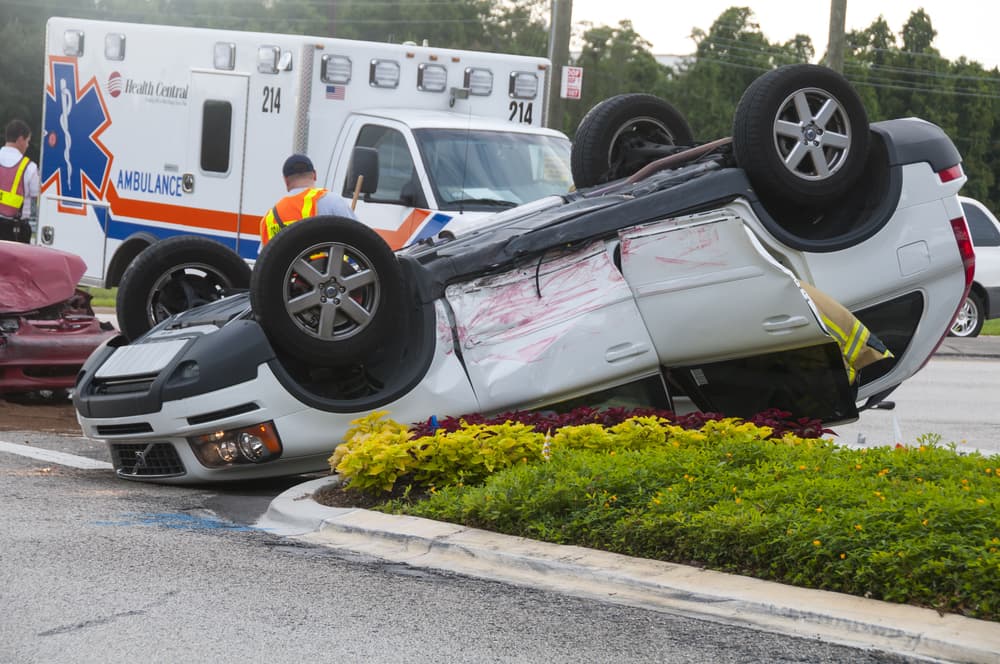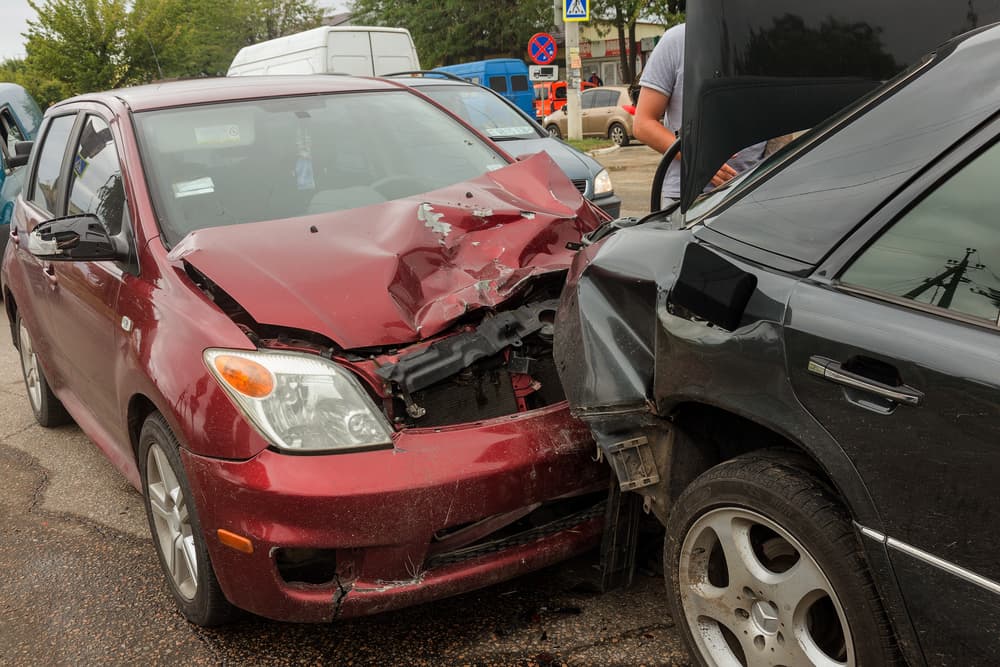Part of Duval County in Florida, Jacksonville is located in the northwestern part of the state. Considered the center of the state's "First Coast" region, the city spans along the St. Johns River, near the mouth of the Atlantic Ocean. It sits about 25 miles (40 km) south of Georgia.
Residents consider Jacksonville a nice place to live, given its sunny climate and up-and-coming restaurant scene. The city is also the largest city by population in Florida and by area within the contiguous United States. The city's consolidation contributes to its great size.
Because of its expansive metro area, Jacksonville is also home to several car accident areas, all considered major crash sites. Overall, hot spots for car accidents span over the entire city. However, the major clusters of accidents happen close to downtown or the beaches. The city's northeastern, western, and northern parts only have a few minor clusters of accident sites. Consult a Jacksonville car accident attorney promptly if you've been in an accident. Professional legal advice is crucial.
The Most Dangerous Intersections in Jacksonville
More specifically, the most dangerous intersections include Blanding Boulevard and Wells Road in Orange Park (with an astounding 127 crashes). You also want to play it extra safely on Blanding Boulevard, where it intersects with Youngerman Circle, Argyle Forest Boulevard, Kingsley Avenue, or Collins Road. You must keep your antennae up while traveling along Blanding Boulevard.
Other dangerous intersections include:
- S.R. 312 and U.S. One
- Atlantic Boulevard and Southside Boulevard
- Beach Boulevard and Hodges Boulevard
Another street, 103rd Street, presents a major collision course when it meets with Ricker Road or Blanding Boulevard.
What Makes Some Intersections More Dangerous than Others

Intersections constitute one of the most complex traffic situations that exist in transport. Multiple lanes of vehicles attempting to turn left, right, or drive straight while sharing road space may result in intricate maneuvers - all requiring quick judgments that aren't always safe. Collisions become imminent when these split-second decisions go awry due to poor visibility, confusing signage, heavy traffic volumes, or other deficiencies.
If you've been in an accident, knowing this information will heighten your awareness when you get into a car again.
Complex Geometry
Intersections that involve multiple turning lanes, dual turning circles, or more than four branching legs can present difficulties for motorists. Research also shows that intersections that exceed four entry and exit points increase crash rates exponentially. These features challenge drivers attempting to cross over or merge with other vehicles. This can be especially difficult when gaps in traffic are narrow.
Blind Corners and Hidden Approaches
Intersections located at the crest of steep hills or in sharp dips can also impair the line of sight for observing oncoming cross traffic. Or, if you're driving on a high crown road, vehicles may appear over the horizon with little warning. While the crown allows for water drainage, it can also be a visual hazard when driving.
Hidden driveways and access roads, obscured by roadside structures, signs, or vegetation, also prevent drivers from perceiving cross traffic soon enough to prevent collisions. Any landscape features concealing one or more approaches to an intersection may also prevent you from adjusting your speed.
Poor Signage and Signals
Whether from knocked-down poles, burnt-out lamps, or general disrepair, intersections lacking clear guidance information invite all types of hazardous maneuvers on the roadways.
Faded pavement arrows and lane markings coupled with no overhead lane signals foster unsafe lane changes, while missing street names or obscured traffic flow signs may cause dangerous last-minute turns. Malfunctioning traffic lights that periodically show green to conflicting traffic streams can also lead to crashes.
Even well-labeled intersections are only as safe as driver compliance. Far too many motorists misinterpret right-of-way navigation and dangerously attempt to beat a light turning from yellow to red. Rolling through clearly posted stop signs also shows that at-fault drivers are careless, at times, when yielding the right-of-way.
High-Speed Traffic Mixing
Notable speed discrepancies at intersections generate significant crash potential as well. For example, uncontrolled left turn lanes that allow vehicles to speed across multiple lanes are an obvious accident waiting to happen.
Where lower-speed side streets meet higher-speed arterials, accidents often occur as well. If you attempt to accelerate to blend into a much faster traffic flow, you can get into trouble fairly fast.
Imbalances in Traffic Volume
Sheer traffic volumes alone do not cause intersection crashes. However, disproportionate ratios between light and heavy traffic can lead to a wreck.
As congestion builds along major multi-lane boulevards and highways, pressure grows for side street drivers to accept dangerously small gaps. Judging the space between two approaching vehicles requires razor-sharp depth perception and timing, even with reasonable sight lines.
If the driver becomes impatient and tries to slip across a heavy traffic flow, they can end up causing a T-bone collision or fatality.
Why It Helps to Investigate the Crash Site
Optimally balanced traffic flows, consistent speeds, clear visuals, and strong compliance with traffic safety aids help prevent collisions. However, the crash risk increases if deficiencies and uncertainty creep into the crossing equation.
Factors that Determine Your Settlement Amount
If you suffered injuries and damages in a motor vehicle crash caused by another driver, you may be entitled to claim compensation.
At this point, you may ask, "What determines the potential settlement value and the amount I'll ultimately receive?"
Various situational factors influence the sums of car accident settlements, whether before filing a formal lawsuit or after a jury trial.
Liability and negligence evidence
Attributing fault for an accident plays a pivotal role in the determination of a damage settlement amount that an at-fault insurer agrees to pay. Police reports, eyewitness statements, and crash scene forensics help establish liability. Clear evidence or admission of negligence from the other motorist makes building a claim straightforward.
Disputes over who caused the collision can lead to a weaker case. That's why you must depend on an attorney's services to see you through each step of the claim process.
Injuries and medical treatment
Insurers base settlements on the extent of documented medical care connected to the crash. Diagnoses, prognosis reports, bills, and records substantiate injury claims. Significant hospitalization, surgeries, appliances/devices, therapy, prescriptions, and time missed from work all elevate justified settlement amounts - as long as the evidence shows these costs were compulsory. Pre-existing conditions and gaps in ongoing care may undermine claim amounts.
Available insurance coverage
An at-fault driver's liability coverage typically limits capped accident payments. Exceeding insured policy maximums requires pursuing additional avenues, such as uninsured motorist coverage or filing a lawsuit.
You need to talk to an attorney to determine all the potential compensation sources for a negligence claim.
Lost income and diminished earnings
Settlement sums must account for all quantifiable accident-related losses - immediate and future. This includes missed work income in the short term, reduced earnings, and/or potential long-term income for a disability. Losses also cover transportation, property damage, and losses from a lack of household contributions.
Non-economic and punitive damages
Car crash settlements factor both tangible out-of-pocket costs and intangible damage elements like pain and suffering or loss of enjoyment from personal injury claims. These non-economic damages make up a majority of most claim resolutions.
Egregious negligence occasionally warrants punitive damages, exceeding mere compensatory sums to punish and deter misconduct.
Comparable case results
Historical settlement data for similar incidents guides reasonable claims resolution values. Experienced attorneys reference past results of cases like yours when benchmarking special damages.
Accessing proprietary legal databases containing millions of case results strengthens assessments of fair compensation, all scaled to the specifics of a claim. Comparisons account for types of injuries, age, vocation, and crash physics.
Litigation costs
Should settlement talks reach an impasse and claims head to court, it will add to the legal cost of receiving a settlement. Often, defendants at this point agree to settle, especially if it means more cost over time to them. That's why parties often resolve many claims out of court.
The value of legally represented claims
Statistically, attorneys achieve drastically higher claim values. Simply having a lawyer at your side sends a message to the at-fault party that you're seeking full entitlement. Self-represented accident victims often settle for undeservedly lower sums out of financial necessity.
The Benefits of Working with a Jacksonville, FL Attorney
Florida's complex auto insurance laws and strict deadlines resolve an injury claim that is difficult to take on yourself. An experienced Florida car accident lawyer guides victims through the post-crash claims process, evaluates case merits, and assertively negotiates with insurers – allowing clients to focus on recovery.
A Lawyer Understands No-Fault Insurance Rules
Florida follows a no-fault auto insurance system requiring drivers to carry Personal Injury Protection (PIP) and property damage liability coverage. Hiring a local personal injury attorney is well-versed in state auto policies and helps you determine covered expenses. An attorney also deals directly with insurers, so you'll receive a fairer and more equitable settlement.
The no-fault concept actively sidesteps litigation and promptly settles claims through the victim's insurance company. Because of the state's no-fault law, your insurance covers auto repairs after an accident that wasn't your fault. However, if the damages exceed your policy limits, you can recover additional compensation elsewhere. Seeking legal guidance can empower you to achieve optimal financial relief.
An Attorney Knows How to Settle Liability Disagreements

The reason for an accident and who is at fault frequently is disputed, especially when an accident site is a busy, fast-moving highway. An attorney can review the police report and the crash site for discrepancies and answers. This enables them to learn more about what happened during the accident.
Retaining a lawyer's services shortly after a collision allows for the timely gathering of evidence before memories fade and testimonies are difficult to access. Contacting an attorney sooner rather than later can contribute to constructing a compelling offense.
A Lawyer Can Submit Your Lawsuit in the Required Time Frame
Injury victims have only four years under Florida's statute of limitations to take legal action and sue at-fault drivers for compensatory damages. Therefore, your lawyer will begin the claims process quickly - filing notices to preserve all legal recovery rights. They will respond promptly to the defendant's claims to make everything right so you'll receive fair and equitable compensation.
An Attorney Understands Court Processes
Should settlement talks stall and a claim enter litigation, you'll need a lawyer's help filing documents and complying with the deadlines.
A personal injury lawyer is familiar with local injury laws and judges, so they can handle all court proceedings on your behalf. Your lawyer will make the process clear and simple for you to understand.
Your Lawyer Will Do Everything They Can to Ensure Your Realize a Maximum Settlement
Documenting the full extent of physical, emotional, and financial damages after a car accident is important for receiving proper restitution. However, gathering this evidence can also prove difficult for a victim who does not have experience in these matters.

An auto accident lawyer will quantify the costs of an accident claim - something they can do easily. Because they are familiar with common crash injuries and therapies, they know what it takes to obtain the proper financial relief.
What you receive for your settlement is not templated. Instead, it relies on the facts surrounding the accident and the severity of your injuries. Also, your lawyer must consider how the state's no-fault law will impact your case.
In addition, what you receive for a car crash is influenced by the societal and economic impact of the crashes in your locale. For example, congested roads can lead to travel delays, increased fuel consumption, and adverse environmental effects.
Police-reported crashes account for most of the economic costs that traffic crashes produce. Unreported crashes impose economic costs on cities and contribute to 19 percent of the expenses.
Your Car Accident Attorney Charges a Contingency Fee
Car accident lawyers typically only receive payment upon successfully settling your claim. They receive no payment unless they secure the compensation necessary to cover your bills without any negative impact. What you pay if they win your case is a percentage - from 20 percent to 50 percent, depending on the lawyer's involvement in the claim. Most attorneys charge 33 percent or one-third of the settlement amount.
The attorney's fee covers collecting evidence, investigating your claim, and filing documentation. This form of payment also ensures that attorneys take on cases they're certain of winning.
Reach Out to a Car Accident Lawyer in Jacksonville, FL Now
If you've been in an accident in Jacksonville and another party is at fault, don't delay—consult with an attorney. Professional legal advice is invaluable even if you believe you share some of the guilt.
In Florida's no-fault system, drivers must carry PIP insurance to cover lost income and medical bills, irrespective of who is at fault. However, if you sustain a serious injury—a bone fracture, a permanent limitation of a body part, or significant disfigurement—you may pursue a lawsuit against the at-fault driver. This allows you to step past no-fault insurance boundaries.
Learn more about your legal rights today by contacting a Jacksonville personal injury lawyer.